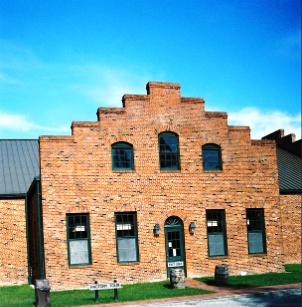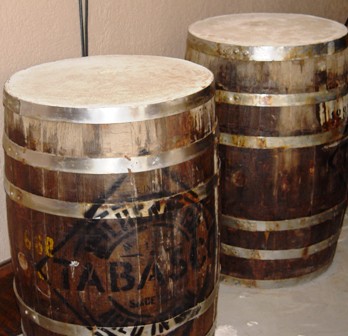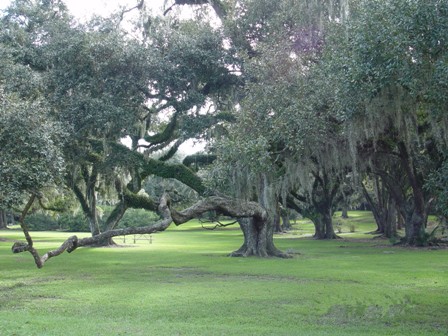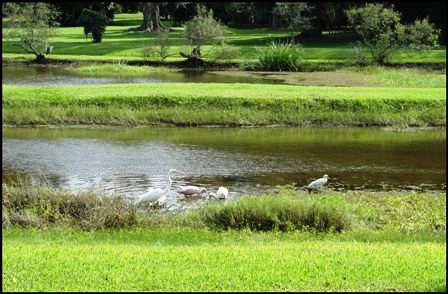
1. The Issue

Abstract
Set back on Louisiana's Avery Island the McIlhenny Co. has become a renown company worldwide for its Tabasco Pepper sauce. It is an important piece of US history since, (legend has it:go to McIlhenny legend), it was a product passed along during the Civil War. Today it remains a prominent piece of American cuisine as it quickly became one of the staples found in American soldiers' MRE (Meals Ready to Eat) as a result of a marketing campaign during the Vietnam War (Baltimore Sun: "Tabasco wins war against bland food rations" April 8, 2003 by Stephanie Shapiro).
The product starts out with a pepper called Capsicum frutescens. Founder of the company, Edmund McIlhenny combined the pepper with some vinegar and other secret ingredients to create the unique hot flavor.
The combination of historical precedent and business savvy has proved a successful combination. The product claims Avery Island, Louisiana as its home even though the pepper's name claims it could have originated in the southern valley of Mexico; Tabasco. This case study examines the economic, environmental, and cultural implications involved in the national and international trade of this product.
2. Description
It is apparent that both the history and environment of Tabasco hot sauce are important elements to the analysis of this geographic indicator.
The unique wetland environment of Avery Island is another aspect to be considered in this analysis. The soil the peppers are cultivated in has a high salt content and becomes a contributing factor to the unique flavor of the peppers as well as an essential part of the brewing process.

Sale and mass consumption worldwide of the hot sauce has also contributed greatly to Louisiana cuisine and the cultural environment and shall be explored in this study. The success of the hot sauce has created international fame for the small Louisiana island. The McIlhenny tabasco company expands on its line of products every day ranging from soy and chipotle sauce, clothing, literature, music, and much more. The economic success of Tabasco is examined in this study as a case study for successful and innovative business marketing.
3. Related Cases
5. Discourse and Status:
Legal Issues
The legal issues that surround the international trade of Avery Island’s precious Tabasco sauce can be viewed through the larger lens of the GATT agreement. In this agreement set out to help countries negotiate just policies and relationships of trade can also aid in looking at Louisiana Tabasco sauce. According to the Rules of Origin section of the GATT agreement from The Uruguay Round Table of 1994, Article 3: Disciplines after the Transition Period:
Taking into account the aim of all Members to achieve, as a result of the harmonization work programme set out in Part IV, the establishment of harmonized rules of origin, Members shall ensure, upon the implementation of the results of the harmonization work programme, that:
(a) they apply rules of origin equally for all purposes as set out in Article 1;
(b) under their rules of origin, the country to be determined as the origin of a particular good is either the country where the good has been wholly obtained or, when more than one country is concerned in the production of the good, the country where the last substantial transformation has been carried out;
This passage of the agreement clarifies definitions used by countries to establish the rules of origin. This section of the agreement is important to the case of McIlhenny Tabasco sauce as the capsicum peppers planted on Avery Island to create the sauce are originally (as history shows) from southern Mexico. As the history of the sauce proves, the peppers were taken from Tabasco, Mexico back in the 1800s. Because of the history of this transfer of product, do the rules of origin still apply? Article 3 explains that if this case was to be applied, the rules of origin would apply to “the country where the last substantial transformation has been carried out” which would be Louisiana, USA.
The legal issues introduced by the Tabasco case rely primarily on national policies. However, as it has been outlined earlier, the international scope of the trade of this condiment has been immense since the mid 1800s. United States policies and of course these regulations from the World Trade Organization help shape these trade relationships. In order to protect the unique recipe and pepper used in the sauce, founder Edmund McIlhenny went immediately to patent his sauce.

Considering the size of Avery Island and its high salt content within the soil, it is not surprising that environment becomes a crucial element to the production of the Tabasco Pepper sauce. The island's rock salt mine became an important target during the Civil War. The salt was used as a popular preservative around the South. According to some, legend has it that the McIlhenny family once prospered from their own salt operation until the Civil War when they fled the island. Upon their arrival, the salt mine was all dried up and Edmund McIlhenny pursued the Tabasco Pepper Sauce business.
b. Geographic Site:
Gulf coast salt domes deeply effect the growth of crops and water in the surrounding areas. It can be argued that tabasco peppers can attribute much of their flavor from this element of Avery Island.
c. Geographic Impact:
10. Sub-National Factors:
11. Type of Habitat:

Trade of Mexican Tabasco Peppers and the Louisiana McIlhenny Tabasco Sauce Legacy
The tabasco sauce exported from Avery Island, Louisiana is considered a “Food and Kindred Product” in an industrial sector analysis of exports from Louisiana. The key exporter is obviously Louisiana however with both domestic and international business growing so quickly, another new exporter of the pepper sauce is Latin America. The main importers of this product recently have been China, Japan, Mexico and Russia.
Key importers: Asia: China, Japan; Latin American: Mexico; Russia
Relevant Data of Exporter:
Louisiana Exports by Industry
(US $, NAICS Database)
|
Description |
JUN 2003 YTD |
JUN 2004 YTD |
% Change |
|
TOTAL ALL INDUSTRIES |
8,783,631,222 |
9,590,580,709 |
9.2 |
1 |
AGRICULTURAL PRODUCTS |
4,173,476,917 |
4,524,765,632 |
8.4 |
2 |
CHEMICALS |
1,846,424,777 |
2,131,926,013 |
15.5 |
3 |
FOOD AND KINDRED PRODUCTS |
1,157,870,996 |
952,147,572 |
-17.8 |
4 |
PETROLEUM AND COAL PRODUCTS |
655,837,887 |
853,540,335 |
30.2 |
5 |
TRANSPORTATION EQUIPMENT |
159,843,966 |
263,256,511 |
64.7 |
6 |
MACHINERY, EXCEPT ELECTRICAL |
211,562,188 |
214,830,568 |
1.5 |
7 |
PAPER |
139,383,791 |
147,336,768 |
5.7 |
8 |
PRIMARY METAL MANUFACTURING |
58,248,973 |
95,883,212 |
64.6 |
9 |
MINERALS AND ORES |
19,344,686 |
69,876,168 |
261.2 |
10 |
FABRICATED METAL PRODUCTS |
45,181,540 |
60,050,629 |
32.9 |
Import Data:
Rank |
Description |
ANNUAL 2001 |
ANNUAL 2002 |
ANNUAL 2003 |
JUN 2003 YTD |
JUN 2004 YTD |
%2001- 2002 |
%2002- 2003 |
%2003- 2004 |
|
TOTAL ALL COUNTRIES |
16,588,957,086 |
17,566,658,462 |
18,390,130,016 |
8,783,631,222 |
9,590,580,709 |
5.9 |
4.7 |
9.2 |
1 |
JAPAN |
2,136,911,331 |
2,521,414,468 |
2,482,255,251 |
1,253,525,053 |
1,236,128,611 |
18.0 |
-1.6 |
-1.4 |
2 |
MEXICO |
1,524,305,665 |
1,631,533,756 |
1,776,102,030 |
865,057,608 |
947,747,783 |
7.0 |
8.9 |
9.6 |
3 |
CHINA (MAINLAND) |
682,723,378 |
767,896,778 |
2,117,340,078 |
813,064,252 |
760,529,430 |
12.5 |
175.7 |
-6.5 |
4 |
CANADA |
1,028,126,978 |
1,036,890,937 |
1,246,883,903 |
610,674,333 |
695,905,274 |
0.9 |
20.3 |
14.0 |
5 |
KOREA , REPUBLIC OF |
549,532,337 |
547,766,303 |
625,824,687 |
305,629,031 |
327,420,583 |
-0.3 |
14.3 |
7.1 |
6 |
COLOMBIA |
376,987,688 |
416,568,009 |
374,434,806 |
192,608,493 |
286,803,154 |
10.5 |
-10.1 |
48.9 |
7 |
SINGAPORE |
180,861,349 |
241,278,819 |
221,075,657 |
133,660,777 |
278,328,656 |
33.4 |
-8.4 |
108.2 |
8 |
EGYPT |
656,007,159 |
629,547,796 |
633,007,420 |
251,611,836 |
271,447,255 |
-4.0 |
0.6 |
7.9 |
9 |
NETHERLANDS |
756,835,052 |
569,258,382 |
499,852,337 |
214,699,026 |
263,774,640 |
-24.8 |
-12.2 |
22.9 |
10 |
CHINA ( TAIWAN) |
643,357,692 |
645,168,742 |
408,517,486 |
227,712,145 |
216,486,867 |
0.3 |
-36.7 |
-4.9 |
This table represents total Louisiana exports including other industrial sectors.
Important Trade Measures to this case include the ones imposed by the WTO’s regulations regarding the trade of
20. Environmental Problem Type:
The Tabasco hot sauce company, McIlhenny is a proud supporter of saving
the Louisiana Wetlands. Since environment is such a key component to this case
study, the relationship McIlhenny maintains with environmental organizations
reveals the social and environmental consciousness of the company. President and
CEO, Paul McIlhenny served on Governor Foster's Committee on the Future of
Coastal Louisiana, and currently serves on his recently established Advisory
Commission on Coastal Restoration and Conservation. His involvement in these
environmental organizations is important as the production and trade of Tabasco
products relies greatly on the quality of the Tabasco pepper which attributes
its characteristic taste to the distinct soil found on Avery Island.
Since
1930, Louisiana has lost about 1,500 square miles of marsh because of land
subsidence and erosion. Every year, the state continues to lose 25 to 30 square
miles of this important coastal environment. Avery Island is the “perfect” environment for the growth of Tabasco peppers. Over time the salt layer was
covered by thousands of feet of alluvial sediment , the pressure of which pushed
numerous salt domes straight up. In five places these domes actually pushed up
the topography. Today, these five coastal islands sit above and are surrounded
by the swamps and marshes of south Louisiana. Avery Island stands the highest at
163 feet above mean sea level.
McIlhenny Company is working to save Louisiana's coastal wetlands.
A Letter from Paul McIlhenny
President & CEO of McIlhenny
Company

25. Culture:
McIlhenny Tabasco sauce sits on the tables of many fine and not so fine restaurants around the world. The main industry in New Orleans, LA is the tourism industry, drawing millions to the city to try the spicy food and celebrate to the music and culture living down south. Food being one of the most popular past times is a focus and the spicy sauce used will always be remembered once leaving the Big Easy. Even though McIlhenny tabasco sauce has been exported within the U.S. and around the world, it's popularity increases with the tourism industry as well.
The reputation for Louisiana cooking has allowed for food products claiming Louisiana influence to become popular. Within the hot sauce industry alone, to gain the popularity and the reputation as the most authentic hot sauce from Louisiana guarantees tremendous success.
Although many other hot sauces compete for the fame of being THE Louisiana hot sauce, it is the history and marketing genius of Edmund McIlhenny that has allowed the McIlhenny products to gain such international fame. Whether McIlhenny is THE Louisiana hot sauce maker or not is not important, nationally and internationally many are more likely to have seen the famous tabasco pepper logo than other hot sauce logos. For tourists and fans of hot sauce hoping to impress dinner guests, McIlhenny has claimed their vote for the most authentic and spicy Louisiana hot sauce.
28. Relevant Literature
http://www.americanprofile.com/issues/20010211/20010211se_531.asp
http://www.tabasco.com/tabasco_history/mcilhenny.cfm
http://www.travelamap.com/mexico/tabasco.htm
http://www.wackyuses.com/tabasco.html
http://www.whatscookingamerica.net/History/Tabasco.htm
http://www.americanprofile.com/issues/20010211/20010211se_531.asp
http://www.fiery-foods.com/dave/history.html
http://lidovky.centrum.cz/akademie/clanek.phtml?id=256704
Kurlansky, Mark; Salt: A World History, Walker and Company, New York, 2002.
Schweid, Richard; Hot Peppers – Cajuns and Capsicum in New Iberia, Published by New Orleans School of Cooking, Louisiana, 1987.